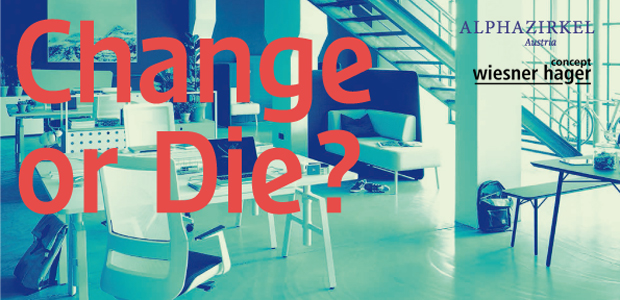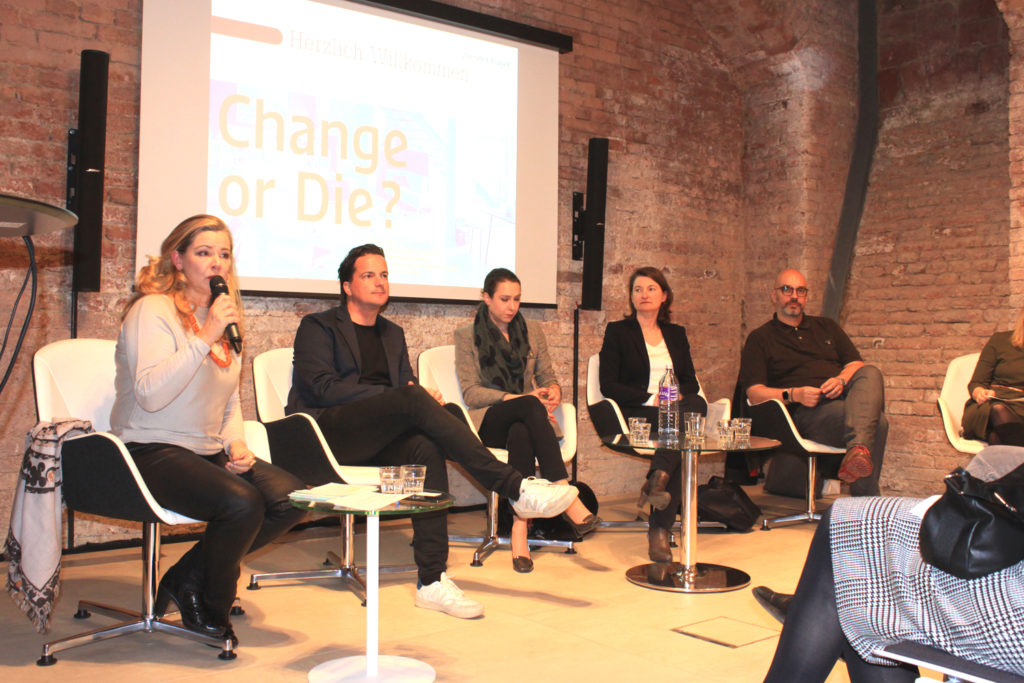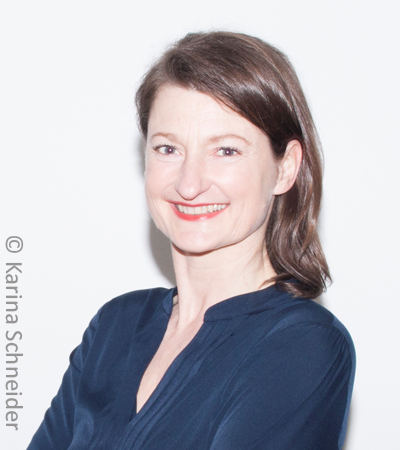Change or Die: An interview with Dr. Birgit Feldhusen
By Christa Schwandtner, 15.03.2019

Technological innovations and the values endorsed by the next generation radically change corporate culture. On this note, ALPHAZIRKEL Austria and Wiesner-Hager organized a panel discussion in Vienna entitled “Change or Die: The End of the Traditional Company through New Forms of Organization?”.
Dr. Birgit Feldhusen, director of the competence area “Future Organizations” at the Danube University Krems, was among the four speakers invited. We requested an interview at the end of the panel discussion.
The ability to change will become increasingly important for companies in the future. Where do you think this push for change comes from?
Dr. Feldhusen: Change has always existed; change is a natural part of life. In my opinion, the reason why we are feeling a kind of pressure at the moment is because the pace of development is accelerating. As a result, technologies and companies alike can disappear overnight or develop from a small start-up into a million-dollar company. The moment things change quickly, the world seems more complex. In other words, when the world around us no longer follows familiar patterns, it becomes increasingly difficult to keep track of things. The ability to change goes hand in hand with the ability to continuously adapt and align oneself, which is nowadays often referred to as agility. The younger generation in particular is increasingly emancipating itself with its own set of ideas and expectations regarding the professional world.
In your organizational model, you describe the relationship between the organizational and individual ability to change and different types of communication. How can this model support companies in their individual change process?
Dr. Feldhusen: Companies are often aware of the fact that they need to make changes, but they are rarely able to integrate developments and requirements into an overall picture. My organizational model, which is the cornerstone of our new course “Agile Organizations & Collective Leadership”, integrates various disciplines such as knowledge management, organizational learning and cognitive science. This represents a new, broadened perspective on organizations, allowing them to identify the basic starting points for change. In addition, it enables organizational and transformation approaches that are already on the market to be classified, which makes it easier to assess their applicability to one’s own organization.

What steps should companies take when they decide to initiate a change process?
Dr. Feldhusen: Many companies would like to have a set of rules to follow in order to get results for the future. This, however, will no longer work in the future – you cannot relinquish personal responsibility. Companies have to look into current contexts and developments and understand them. In my lectures, I make a clear distinction between change and development. What lies ahead of us from today’s perspective is rarely a change in the sense of reaching our goals once a project has been completed. In the end, it’s all about starting with the basic ability to change. This gives rise to self-reflection and inherent flexibility, which we learn to develop in the course of these projects and which prepare us for a constant stream of new challenges.
You research studies on collective vs. individual intelligence. What are your main findings?
Dr. Feldhusen: Within the scientific community, intelligence is defined as the ability to successfully solve many different types of problems. It is not a question of solving a single type of problem, but of repeatedly solving many different problems in a satisfactory manner. Studies have shown that teams have a kind of collective intelligence. There are certain contributing factors within a team that enable it to perform different tasks better than other teams that lack these factors. The ability to communicate with each other in a balanced way, for instance, is a crucial element. Social sensitivity, which leads to social encounters of a higher quality, is also very important in this context. Moreover, collective intelligence is not focused on the intelligence of individual team members. Even with many intelligent members, you can have a stupid team if it has not internalized good communication patterns.
A look into the crystal ball: What do you think organizations will look like in twenty years’ time compared to today?
Dr. Feldhusen: This is an extremely difficult question. Ten years ago, we were able to make conjectures about today’s developments, but their dynamics had not yet unfolded. Even today, I can therefore only speculate: In 20 years’ time, organizational models that have not managed to adapt flexibly will no longer exist or will only operate in very specific environments. Many organizations will be very much involved in development, innovation and new technologies and will operate with a high degree of agility. I think there will be a highly differentiated view of organizations. The appearance of future organizations will be much more heavily influenced by their mission, objectives and function than it is today.
Dr. Birgit Feldhusen

Dr. Birgit Feldhusen is the director of the certificate and MBA course "Agile Organizations & Collective Leadership" at the Danube University Krems. She works as a research associate at the Department of Economics and Management Sciences and heads the competence area "Future Organizations". She organizes seminars and training courses focusing on the emergence-oriented principle of leadership. In a series of events and lectures, she introduces and discusses core topics relating to the new world of organization and leadership.




